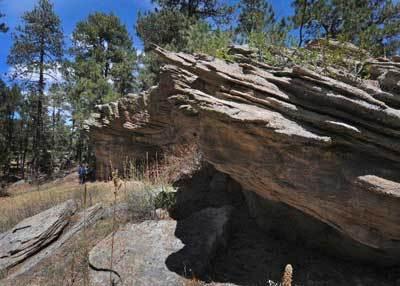Blake de Pastino
Source - http://westerndigs.org/prehistoric-pottery-found-in-colorado-contains-ancient-natural-aspirin/
Fragmented pottery unearthed in a rockshelter in east central Colorado has revealed traces of salicylic acid, a substance derived from willow bark that’s the natural precursor to modern-day aspirin.
Dated to the 7th century, the pottery may be the earliest known physical evidence of the chemical’s use in North America, according to archaeologists.

Initial preparations for the third of four sherds tested from the rockshelter site. Chemical analysis revealed residues with a 70% to 93% match to salicylic acid, a precursor compound of aspirin. (Courtesy Denise Regan)
Denise Regan, who begins her graduate work in archaeochemistry at Durham University next year, took part in the dig that uncovered the fragments in 2011, at a remote rock overhang in Elbert County, not far from where the Great Plains meet the mountains of Colorado’s Front Range.
There, she and her colleagues uncovered artifacts going back more than 1,300 years, including pieces of a small scraper or knife, and four pottery sherds as much as 80 centimeters below the surface.
To learn what the plain gray pottery might have been used for, Regan called on her training in biomolecular analysis to search for residues on the fragments.
“I struck out on three [of the sherds], but the fourth one was where we got the salicylic acid from willow bark, which I was able to repeat under four different methodologies, with the same results,” Regan said. “So I feel confident about the findings.”
The ethnographic record is rich with accounts of native peoples throughout the West using the bark, leaves, and roots of willow trees as a topical painkiller and to reduce inflammation.
Particularly among Puebloan cultures and groups of the Great Plains, people were known to prepare infusions of the willow’s roots and inner bark, and make poultices that were applied to aches, some practices that continue today.
“If you talk to the Arapahoe or the Cheyenne, they’ll use willow bark either as a tea with the leaves or they will soften the bark in boiling water and chew on it for toothaches and as a pain reliever,” Regan said.
But salicylic acid can be dangerous if taken internally in anything but small amounts. So in the late 19th century, European chemists devised a safer derivative — acetylsalicylic acid, marketed as Aspirin.
The cultural origins of the pottery remain unclear, Regan said.
Radiocarbon measurements of the sherd dated it to between 586 and 692 CE. But with so few fragments, made with no distinctive markings, it’s difficult to source the pottery to a specific culture, she said.
Aside from the one sherd’s definitive traces of willow bark, she added, the most notable thing about it was simply that no other substances were found on it.
“We didn’t find evidence of anything else organic,” she said. “Normally we’d find some sort other type of a lipid that could be traced back to maybe a rabbit or some sort of meat, or something else that they probably would’ve eaten.
“But this is all that came out of this sherd, repeatedly, under four different methodologies.”
This suggests that the sherd may have been part of a “medicine pot,” a specialized vessel that was only used to prepare or carry therapeutic preparations, she said.
“I think it’s reasonable to infer that this pot was used for medicinal purposes and not to cook food,” she said. “If it was used to cook food we would’ve more than likely found something else in there.”

The rockshelter in east central Colorado where the 7th century pottery sherds were found. (Image courtesy Brad Crooks)
In addition to providing physical proof of ancient medicinal practices already known from the ethnographic record, Regan added, the pottery’s discovery adds more than a thousand years to our understanding of native lifeways in this sliver of the ancient West.
“I think the implication is that there is continuity — that we know that willow bark is in use now, and has been historically, and now we find that it was also used prehistorically.
“So there’s continuity in the lifeways of these folks. … It’s embedded in their culture and their oral history, and it becomes part of who they are.”
Still, the find also serves as a reminder of how much we have yet to learn about life in 7th century Colorado.
“There hasn’t been a whole lot of excavation done east of the foothills in Colorado, or up and down the Front Range here,” Regan said. “We just know where this was found.”
Chemical analysis like that used to study the rockshelter sherds may be an important tool in opening up this chapter of the past, Regan said.
“We’re just at the beginning of this,” she said.